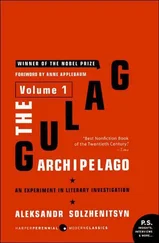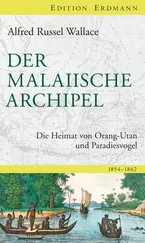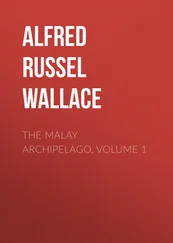Alfred Russel Wallace
The Malay Archipelago (Vol. 1&2)
Complete Edition
e-artnow, 2021
Contact: info@e-artnow.org
EAN: 4064066387747
Volume 1 VOLUME 1 Table of Contents
Volume 2 VOLUME 1 Table of Contents
Table of Contents Table of Contents Volume 1 VOLUME 1 Table of Contents Volume 2 VOLUME 1 Table of Contents
PREFACE.
CHAPTER I. PHYSICAL GEOGRAPHY.
CHAPTER II. SINGAPORE.
CHAPTER III. MALACCA AND MOUNT OPHIR.
CHAPTER IV. BORNEO—THE ORANGUTAN.
CHAPTER V. BORNEO—JOURNEY INTO THE INTERIOR.
CHAPTER VI. BORNEO—THE DYAKS.
CHAPTER VII. JAVA.
CHAPTER VIII. SUMATRA.
CHAPTER IX. NATURAL HISTORY OF THE INDO-MALAY ISLANDS.
CHAPTER X. BALI AND LOMBOCK.
CHAPTER XI. LOMBOCK: MANNERS AND CUSTOMS OF THE PEOPLE.
CHAPTER XII. LOMBOCK: HOW THE RAJAH TOOK THE CENSUS.
CHAPTER XIII. TIMOR.
CHAPTER XIV. THE NATURAL HISTORY OF THE TIMOR GROUP.
CHAPTER XV. CELEBES.
CHAPTER XVI. CELEBES.
CHAPTER XVII. CELEBES.
CHAPTER XVIII. NATURAL HISTORY OF CELEBES.
CHAPTER XIX. BANDA.
CHAPTER XX. AMBOYNA.
Table of Contents
My readers will naturally ask why I have delayed writing this book for six years after my return; and I feel bound to give them full satisfaction on this point.
When I reached England in the spring of 1862, I found myself surrounded by a room full of packing cases containing the collections that I had, from time to time, sent home for my private use. These comprised nearly three thousand bird-skins of about one thousand species, at least twenty thousand beetles and butterflies of about seven thousand species, and some quadrupeds and land shells besides. A large proportion of these I had not seen for years, and in my then weakened state of health, the unpacking, sorting, and arranging of such a mass of specimens occupied a long time.
I very soon decided that until I had done something towards naming and describing the most important groups in my collection, and had worked out some of the more interesting problems of variation and geographical distribution (of which I had had glimpses while collecting them), I would not attempt to publish my travels. Indeed, I could have printed my notes and journals at once, leaving all reference to questions of natural history for a future work; but, I felt that this would be as unsatisfactory to myself as it would be disappointing to my friends, and uninstructive to the public.
Since my return, up to this date, I have published eighteen papers in the "Transactions" or "Proceedings of the Linnean Zoological and Entomological Societies", describing or cataloguing portions of my collections, along with twelve others in various scientific periodicals on more general subjects connected with them.
Nearly two thousand of my Coleoptera, and many hundreds of my butterflies, have been already described by various eminent naturalists, British and foreign; but a much larger number remains undescribed. Among those to whom science is most indebted for this laborious work, I must name Mr. F. P. Pascoe, late President of the Entomological Society of London, who had almost completed the classification and description of my large collection of Longicorn beetles (now in his possession), comprising more than a thousand species, of which at least nine hundred were previously undescribed and new to European cabinets.
The remaining orders of insects, comprising probably more than two thousand species, are in the collection of Mr. William Wilson Saunders, who has caused the larger portion of them to be described by good entomologists. The Hymenoptera alone amounted to more than nine hundred species, among which were two hundred and eighty different kinds of ants, of which two hundred were new.
The six years' delay in publishing my travels thus enables me to give what I hope may be an interesting and instructive sketch of the main results yet arrived at by the study of my collections; and as the countries I have to describe are not much visited or written about, and their social and physical conditions are not liable to rapid change, I believe and hope that my readers will gain much more than they will lose by not having read my book six years ago, and by this time perhaps forgotten all about it.
I must now say a few words on the plan of my work.
My journeys to the various islands were regulated by the seasons and the means of conveyance. I visited some islands two or three times at distant intervals, and in some cases had to make the same voyage four times over. A chronological arrangement would have puzzled my readers. They would never have known where they were, and my frequent references to the groups of islands, classed in accordance with the peculiarities of their animal productions and of their human inhabitants, would have been hardly intelligible. I have adopted, therefore, a geographical, zoological, and ethnological arrangement, passing from island to island in what seems the most natural succession, while I transgress the order in which I myself visited them, as little as possible.
I divide the Archipelago into five groups of islands, as follows:
I. THE INDO-MALAY ISLANDS: comprising the Malay Peninsula and Singapore, Borneo, Java, and Sumatra.
II. THE TIMOR GROUP: comprising the islands of Timor, Flores, Sumbawa, and Lombock, with several smaller ones.
III. CELEBES: comprising also the Sula Islands and Bouton.
IV. THE MOLUCCAN GROUP: comprising Bouru, Ceram, Batchian, Gilolo, and Morty; with the smaller islands of Ternate, Tidore, Makian, Kaióa, Amboyna, Banda, Goram, and Matabello.
V. THE PAPUAN GROUP: comprising the great island of New Guinea, with the Aru Islands, Mysol, Salwatty, Waigiou, and several others. The Ke Islands are described with this group on account of their ethnology, though zoologically and geographically they belong to the Moluccas.
The chapters relating to the separate islands of each of these groups are followed by one on the Natural History of that group; and the work may thus be divided into five parts, each treating one of the natural divisions of the Archipelago.
The first chapter is an introductory one, on the Physical Geography of the whole region; and the last is a general sketch of the races of man in the Archipelago and the surrounding countries. With this explanation, and a reference to the maps which illustrate the work, I trust that my readers will always know where they are, and in what direction they are going.
I am well aware that my book is far too small for the extent of the subjects it touches upon. It is a mere sketch; but so far as it goes, I have endeavoured to make it an accurate one. Almost the whole of the narrative and descriptive portions were written on the spot, and have had little more than verbal alterations. The chapters on Natural History, as well as many passages in other parts of the work, have been written in the hope of exciting an interest in the various questions connected with the origin of species and their geographical distribution. In some cases I have been able to explain my views in detail; while in others, owing to the greater complexity of the subject, I have thought it better to confine myself to a statement of the more interesting facts of the problem, whose solution is to be found in the principles developed by Mr. Darwin in his various works. The numerous illustrations will, it is believed, add much to the interest and value of the book. They have been made from my own sketches, from photographs, or from specimens—and such, only subjects that would really illustrate the narrative or the descriptions, have been chosen.
Читать дальше












